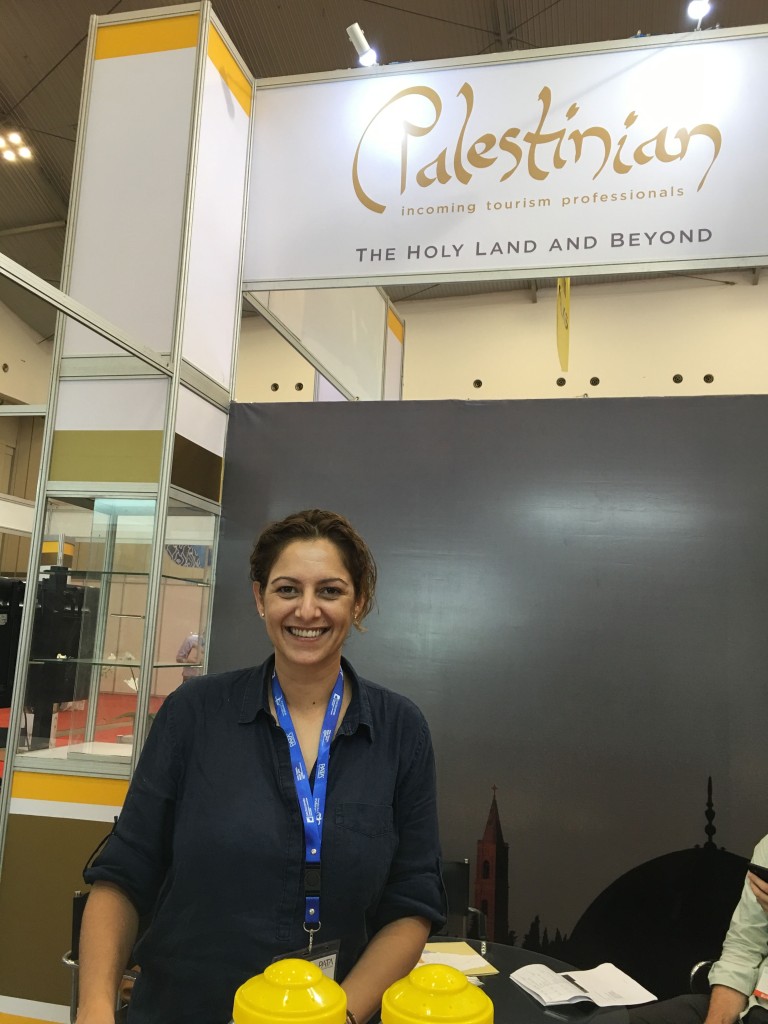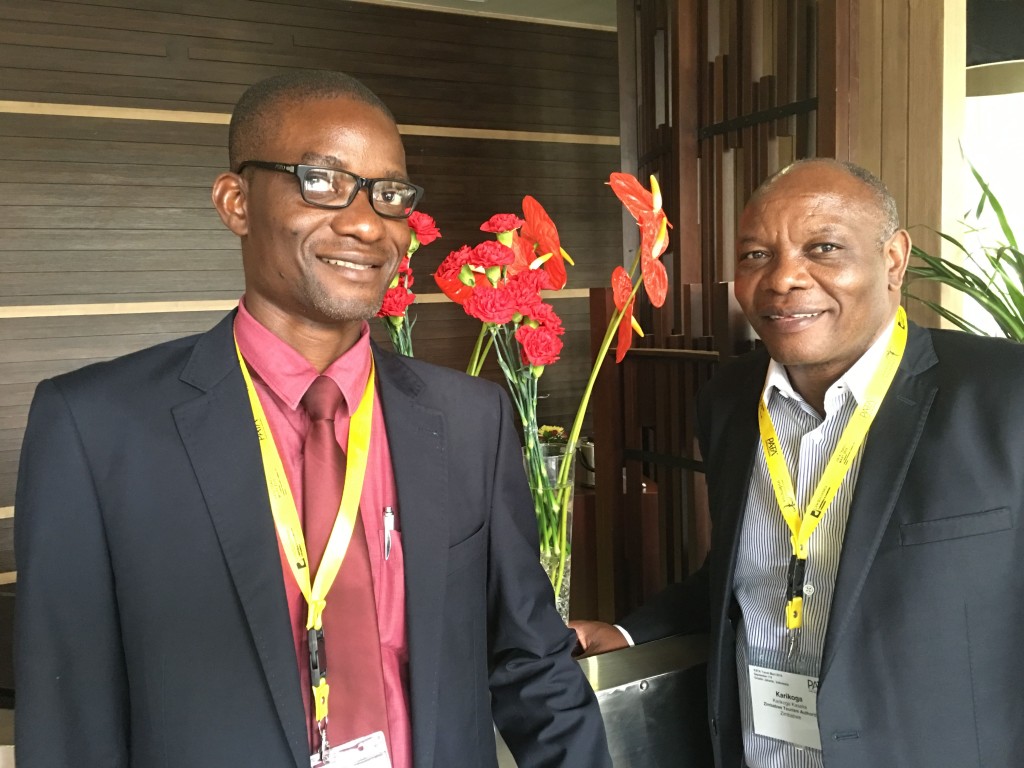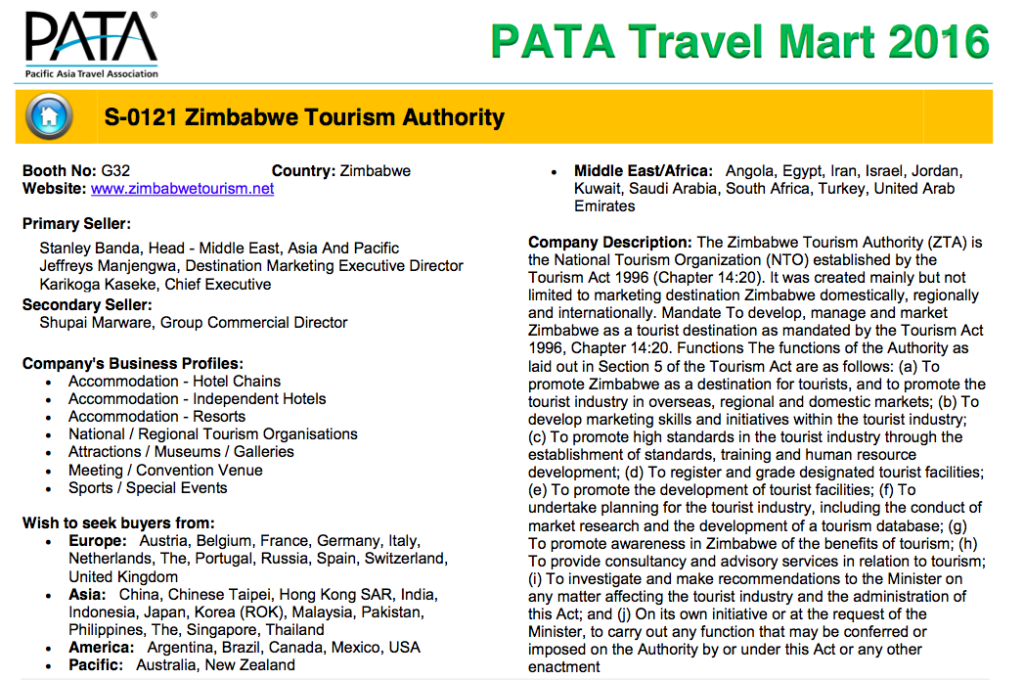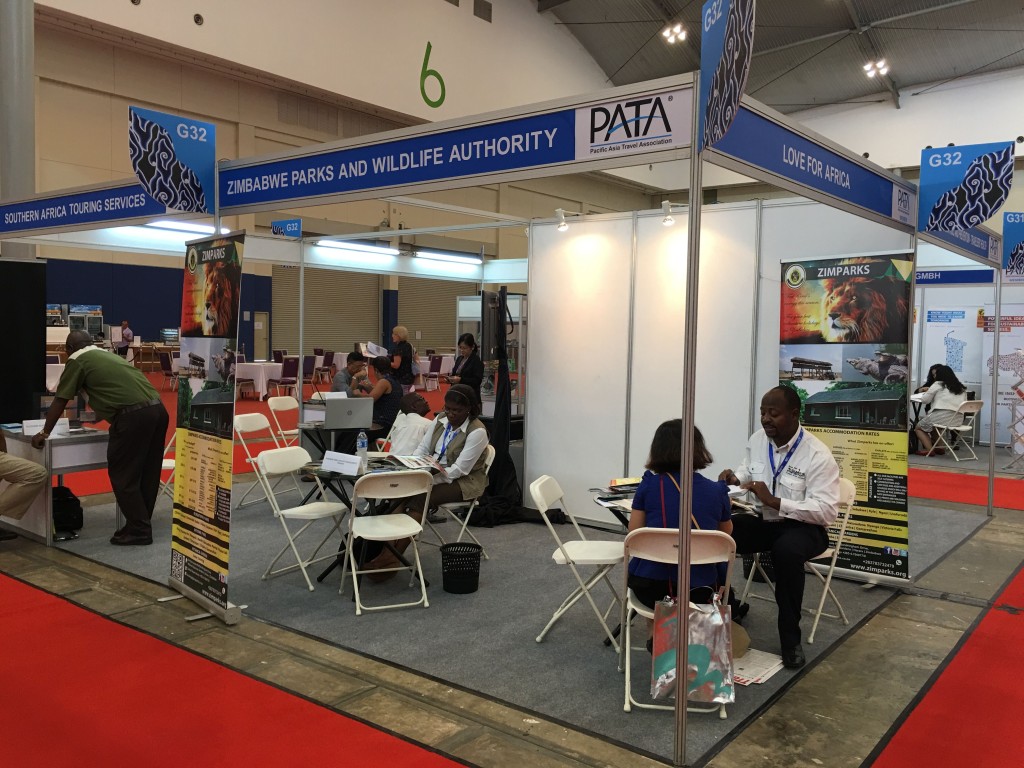
21 Sep, 2016
Why Palestine, Zimbabwe made history at PTM 2016
Jakarta – The inaugural presence of Zimbabwe and Palestine at the Sept 7-9 PATA Travel Mart in Jakarta was more than just an ordinary trade event. It was a statement of geopolitical defiance – defiance against what both destinations refer to as negative perceptions conveyed by the Western-controlled mainstream media – and an appeal to Asia-Pacific travel buyers to send their clients to see the real situation for themselves.
As many Asia-Pacific destinations, too, have faced the same problem at one time or another, that powerful message should resonate widely here.
Both destinations see huge potential and promise for attracting more visitors from the Asia-Pacific. Zimbabwe made history by becoming the first African NTO to join PATA. And the Palestinians, represented by the Holy Land Incoming Tour Operators Association, also made history by exhibiting for the first time at a PTM.
Their presence could usher in a new era for travel between the Asia-Pacific and the Middle East and Africa, and go a long way towards enhancing the social, cultural, economic and geopolitical relations between the regions.
Travel Impact Newswire Executive Editor Imtiaz Muqbil interviewed senior executives of both destinations at the PTM 2016.
Palestine: Visitors can become “Ambassadors for our Cause”
 Margot Tarazi |
Interview with Margot Tarazi, Executive Director, Holy Land Incoming Tour Operators Association
What’s the background to your presence here?
I first came to Jakarta in April 2016 as part of the Holy Land Incoming Tour Operators Association, representing 52 agents in Palestine and Jerusalem, the Arab Hotel Association and a group of civil society representatives. We came to meet with different parties such as the Ministry of Tourism, Religious Affairs, Culture and Education and just to get the feel of the country. We were advised that it is a good market to follow up with. And then we were told about the PATA Travel Mart, and that’s why we are here. We are trying to promote the Islamic incoming market to try and make them stay longer than just 2-3 days. We want them to see more of the real Palestine, and meet with the people and see what Palestine is about and not just what they hear on the news.
 Ms Tarazi with Indonesian buyers. |
How does one get to Palestine?
All applications have to be approved by the Israeli Ministry of Interior. Since March 31st this year, the Indonesians can apply through one of our agents, if there is a group of 10. You need 22 working days to process the application. The details have to be sent to an agent registered in Jerusalem. Only an agent registered in Jerusalem can apply. If the application is sent through another agent registered elsewhere in Palestine, that agent will have to apply through an agent registered in Jerusalem anyway. The application will take longer to process if there is an Israeli national feast (holiday). Like in September, the Israelis have two feasts. Then it can take longer, perhaps two months. But that only happens a couple of times a year.
Has there been any change in the process recently? Become easier or tougher?
The regulations have just recently been changed. Previously, you needed a minimum of five people to apply.
Then what?
The group arrives via Jordan and enters Palestine via the Allenby bridge border crossing. They usually go straight to Jerusalem and straight to Al Aqsa mosque. Some of them choose to go Hebron and Nablus and the other historic cities. However, they usually stay in hotels in East Jerusalem that are close or otherwise have easy access to the Al Aqsa mosque so they don’t need transfers. Many usually come around the Haj season. If they get a double visa (to Saudi Arabia), they come (to Palestine) and they return. The Muslims call it Mubarakah.
What’s the rejection rate like?
Usually young men in their 20s get rejected if they are not travelling with a family. The Israelis decide. It’s security for them. Also, getting a visa does not mean that you will get entry. They will decide at the border. However, Allenby is not so much of a problem. It’s worse at Ben Gurion airport (Tel Aviv).
What about the Christian pilgrims?
The same rules apply. They have different rules for every country. The Christian tour itinerary is longer – six nights, seven days. They go to all the holy sites of the lifetime of Jesus from birthplace to crucifixion. The exact tour depends on the denomination of the group, Catholics, Orthodox, so on.
Is the rejection rate as high as that for the Muslims?
A bit less.
Do the payments have to be made through an Israeli bank?
No. Payments can be remitted to the Bank of Palestine, or Arab bank or any other based in West Bank.
How have you found your experience at the PTM in Jakarta?
It’s been good. People have received us with open arms. We’ve met buyers from Asian and non-Asian countries. Many have been surprised to see us here. In the last two days I have not stopped meeting people but it will only mean something if there is business. This is the first time I have been at a travel show where buyers and sellers have to use stickers and sign an appointment sheet. I’ve never done that in my life.
What are you going to do next?
Look at each business card and get in touch with them to follow up on the details of what they need.
What kind of questions do you typically get?
Is it safe? I get that all the time. People are stuck with this mindset that it is never safe. I tell them: I live there, and wouldn’t come here (to promote Palestine) if the situation was not. In situations when it is not safe, I would cancel that group myself. But I’ve only had to do that twice since 2000.
What was your key message to buyers at the PTM?
We are trying to get visitors to stay longer, and introduce new products. Their clients need to meet with the (Palestinian) people and talk to the people and sit with the people. We understand it’s difficult as they (their clients) are in a hurry to go back home. But you have to sell what the clients want. In April 2016, I was talking to journalists at Kompas and the Jakarta Post (two leading Indonesian newspapers). We were talking about Palestine. I gave them a presentation about Battir, Cultural Landscape of Southern Jerusalem, which was declared a UNESCO World Heritage Site in 2014. And they said: “Why don’t we get ever to see these things?”
I was surprised to see buyers from all over the world. I found them to be much more open than in the European market. Here they come to you and look for you. And for them Palestine is now a hot item to be sold. And they need to have the knowhow and the costs. The best way they can get that is to visit Palestine. We are hoping to do more fam trips for them to sell Palestine.
Fam trips from where?
Probably from Indonesia and Malaysia. Tourism is very important for Palestine. Yes, there is an occupation but the people are just like anywhere else. We want more interaction with those at the grassroots of society, the under-privileged. Palestinians have the highest levels of education in the Arab world, and it (tourism) is very important for us. If people just go to the main places, the main players in tourism benefit. And that is not enough. It has to benefit the community at large. They should see (Palestine) and should learn about it.
What’s it like going through all the Israeli checkpoints?
Believe me, the tourists have it much easier than the locals. Seeing is believing and that is the Palestine they should concentrate on. And if they (the tourists) are safe, and taken care of and they know exactly how things are, they will become Ambassadors for our Cause.
Zimbabwe to expand tourism presence in Asia
Interview with Zimbabwe Tourism Authority CEO Mr. Karikoga Kaseke
The first African country to join PATA, Zimbabwe made its debut at the PATA Travel Mart in Indonesia and plans to use it as a launchpad to raise its marketing profile in the Asia-Pacific. The full contingent included four companies, plus the NTO, the Zimbabwe Tourism Authority.
The initiative is the brainchild of ZTA CEO Mr. Karikoga Kaseke who studied in Singapore between 1996–98, first at the National University of Singapore for his Masters in Transportation Systems Management followed by a postgraduate Diploma in Aviation Management. “I’m in love with Asia,” he said. “When you live and work here you develop an affinity with the place. Last year, we decided to open an office after attending the PATA Adventure Travel Mart and became PATA members this year. We will be attending future travel marts and other PATA events.”

Zimbabwe Tourism Authority: Karikoga Kaseke, Chief Executive (right), and Stanley Banda, Head – Middle East, Asia And Pacific.
The country is eyeing potential source-markets out of Indonesia, Malaysia, Singapore, South Korea, Japan and China. At the moment the main sources of Asian visitors are Japan (28,000 a year) and China (22,000 a year). There is an office in India and Mr. Kaseke wants to set up more offices in Asia in 2017, one in China for sure, and one more in either Singapore or Malaysia to cover the ASEAN market.
Mr. Kaseke said he was very pleased with the response at the PTM, especially the enhanced productivity that came with business match-making and prescheduled appointments with the buyers.
The twin problems are facilitation and accessibility. Mr. Kaseke says the best way from most Asian cities to Harare is via Dubai on Emirates. Citizens of Singapore, Malaysia and Indonesia don’t need a visa to Zimbabwe but Mr. Kaseke is confident more countries will be added as the numbers grow. He notes that some Central African countries are working on joint visa policies which will make it easier for Asia Pacific tourists to visit several African countries in one trip.
The biggest challenge, however, will be dealing with the perception issue. Mr. Kaseke plans to make extensive use of fam trips to convey the “seeing is believing” message and get a more sympathetic hearing. He says several Asia-Pacific countries, too, face a similar problem and consumers know that what they read or hear in the Western media is not always a reflection of reality.


The ZTA booth at the PTM 2016




Liked this article? Share it!